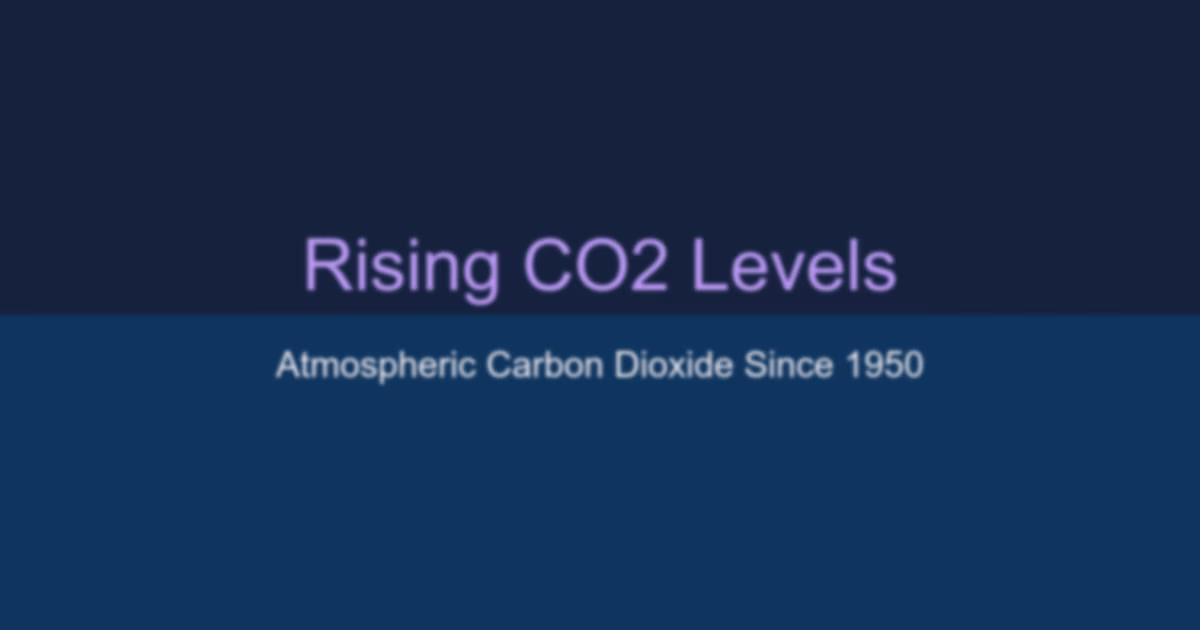The relentless rise of atmospheric CO2 since 1950
In 1958, Charles David Keeling began measuring atmospheric carbon dioxide at the Mauna Loa Observatory in Hawaii. What he discovered would become one of the most important datasets in climate science—a relentless, accelerating rise in CO2 concentrations that shows no signs of stopping.
The numbers tell a stark story
When measurements began in the late 1950s, atmospheric CO2 stood at approximately 315 parts per million (ppm). Today, we've crossed 420 ppm—a level not seen in over 3 million years. But it's not just the increase that's alarming; it's the acceleration.
Consider the pace of change:
- 1958-1988: CO2 rose from 315 to 350 ppm (35 ppm in 30 years)
- 1988-2018: CO2 rose from 350 to 410 ppm (60 ppm in 30 years)
- Current rate: Increasing by ~2.5 ppm per year
Why Mauna Loa matters
The Mauna Loa Observatory sits at 11,135 feet elevation on the Big Island of Hawaii, far from major pollution sources. This isolation makes it ideal for measuring Earth's "background" CO2 levels—what's actually in our global atmosphere, not just local pollution.
The pre-industrial baseline
To understand the full scope of change, we need to look beyond 1950. Ice core data reveals that for the 10,000 years before the Industrial Revolution, atmospheric CO2 remained remarkably stable around 280 ppm.
| Period | CO2 Level | Context |
|---|---|---|
| Pre-1750 | ~280 ppm | 10,000 years of stability |
| 1950 | ~310 ppm | Early industrial impact |
| 1990 | ~355 ppm | Acceleration begins |
| 2024 | ~422 ppm | Highest in 3+ million years |
What drives the acceleration?
The accelerating rise reflects our expanding global economy and energy use:
- Fossil fuel combustion: Coal, oil, and natural gas burning releases ~36 billion tons of CO2 annually
- Deforestation: Reduces Earth's capacity to absorb CO2
- Industrial processes: Cement production alone accounts for ~8% of global emissions
The atmosphere doesn't care about our politics or economics. It just responds to physics. Dr. Ralph Keeling, current director of the CO2 program
The path forward
Understanding this trend is crucial because CO2 is a primary driver of global warming. Each ppm increase traps more heat in Earth's atmosphere. The Paris Agreement aims to limit warming to 1.5°C, but at current rates, we'll likely exceed the CO2 levels compatible with that goal within a decade.
The Keeling Curve stands as both a scientific achievement and a stark warning. It's the most direct evidence we have of humanity's impact on Earth's atmosphere, measured breath by breath, year after year, with no ambiguity in its message: we are fundamentally altering our planet's climate system at an unprecedented rate.
Notes
- Data from NOAA's Global Monitoring Laboratory, updated monthly at gml.noaa.gov/ccgg/trends/.
- The Mauna Loa record is maintained by both NOAA and the Scripps Institution of Oceanography.
- Pre-industrial CO2 levels are determined from air bubbles trapped in Antarctic ice cores.
